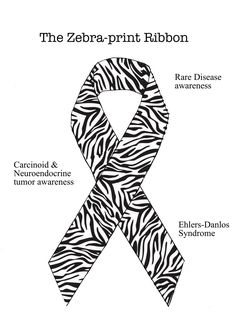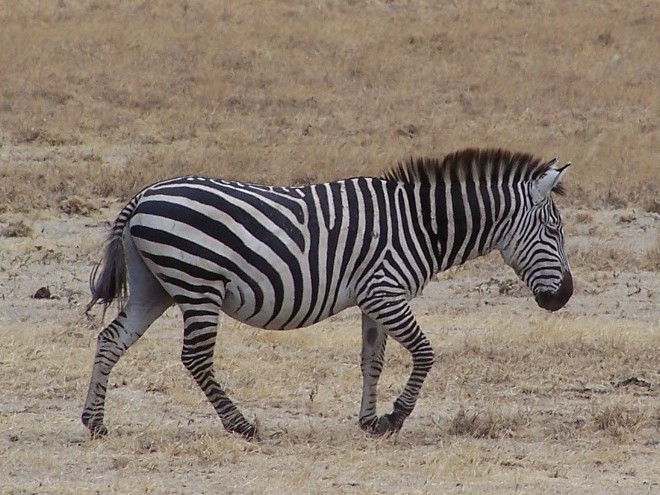When my hubby and I made our first trip to Tanzania in East Africa to see our daughter and her family, it was the giraffes that captured my attention.
Fifteen years later, it’s the zebra that seized my attention.
A giraffe is unlike any other animal. The zebra however could be mistaken for a small horse that paused too long in front of a graffiti artist. That’s why the zebra became the mascot for rare diseases.
A giraffe is unlike any other animal. The zebra however could be mistaken for a petite horse that paused too long in front of a graffiti artist. That's why the zebra became the mascot for rare diseases. Click To TweetThe rare disease might look similar to one or more medical conditions or diseases, but doesn’t match any of the molds.
Some symptoms of a rare disease may present like the features of a horse—for example, common conditions like shortness of breath, fatigue, diarrhea, heart palpitations, rashes, nausea, and facial flushing. But all or most of the symptoms together might actually be zebra stripes pointing to a real and rare disease.
Rare diseases haven’t earned a cancer ribbon color of their own. In fact, many are so rare the average specialist may never have seen it. And if they did, they were likely too far out from medical school to know what they were looking at. Consequently, zebra stripes have become the mascot for rare diseases like Neuroendocrine Cancer.
Rare diseases haven't earned a cancer ribbon color of their own. Consequently, zebra stripes have become the mascot for rare diseases like Neuroendocrine Cancer. Click To Tweet
Neuroendocrine tumors are what turned my head toward the zebra.
In May 2018, a local gastroenterologist removed a polyp from my small intestine that turned out to be a carcinoid neuroendocrine tumor.
In October 2019, I had surgery to remove a second neuroendocrine tumor and the lymph node where the cancerous tumor camped just outside my pancreas.
Two years ago, I hadn’t heard the word carcinoid and couldn’t have told you what my neuroendocrine system was or does. My local doctors and I had to Google those types of tumors to gain even a baseline for what we were dealing with.
Thankfully, I am currently tumor free and on surveillance with a scanning schedule. But this isn’t a post about a chronic illness or even about my journey with a rare and wily disease, although I do want to help raise awareness (especially in the medical community).
This conversation is more specifically about gaining perspective in the wake of any given wave that rocks your boat.
This isn't a post about a chronic illness or even about my journey with a rare and wily disease. This conversation is more specifically about gaining perspective in the wake of any given wave that rocks your boat. Click To TweetFor me, the zebra represents a change of plans and a new direction. You can relate to a detour that wasn’t on your original course map or even on your radar, right? Your zebra might be a divorce, the loss of a child, a financial setback, a different illness (chronic or terminal or both), long-term care-giving, a business betrayal, widowhood. You name it, we all face sinister circumstances now and again.
For me the zebra represents a change of plans and a new direction You can relate to a detour that wasn't on your original course map or even on your radar, right? Click To Tweet
Riding a zebra with grace and peace, whether it represents a rare disease or something else unpredictable in your life, requires space to process the dizzy-making stripes and gain perspective.
7 THINGS I’M LEARNING ABOUT RIDING A ZEBRA
- Prepare for a bumpy ride. Expect to be jerked around by circumstances and your emotions. You’ll regain your equilibrium. Give yourself some time.
- You’re going to fall off. Surprises happen. Sadness comes. Take a deep breath and get up.
- Don’t ride alone. A journey by nature can be lonely. Call a friend. Engage a prayer partner. Consider joining a support group. Maybe a GriefShare group. Reach out.
- Riding a zebra requires space–physical, emotional, mental, and spiritual space. Give yourself permission to take a break, change your pace, and reprioritize.
- Go toward light. Open the shades. Sit near a window that’s streaming natural light. Get outdoors. Go for a walk.
- Get physical. Riding a zebra is stressful. Physical movement can help combat the effects of stress. So to the extent that you can, get physical.
- Faith matters. My faith in God, reading the Bible, and talking to God in prayer is the foundation that gives me the strength to face the zebra and ride on.
Hang on, friends. I’m riding with you. We’re in this together.
Click here to see my Pinterest board on Neuroendocrine Cancer.
Click here to check out what the Mayo Clinic has to say about Neuroendocrine Tumors.
Click here to read what The Carcinoid Cancer Foundation says about Neuroendocrine Cancer.


Comments 3
This certainly fits with what we are experiencing with this virus. I enjoy the scriptures and the prayers you include in your books. I just finished the novellas.
Author
Thank you, Dale. Good to hear from you, and I’m glad you’re finding encouragement from my books. God bless you!
Enjoy reading your compelling words. Such a creative post with good reminders! I will ride on that zebra into the sunset! Hope you and your family are doing wel.